Introduction to Pop Up Camper Air Conditioning
If you’re planning an outdoor adventure in your pop-up camper, having effective air conditioning is essential for staying cool and comfortable. This blog explores innovative pop up camper air conditioner ideas to help you select the best system, enhance your camper’s cooling capabilities, and maintain efficiency. From understanding the different types of air conditioners available to incorporating creative cooling solutions, these tips will ensure your camping experience is enjoyable, even during the hottest days.
As the popularity of pop-up campers continues to rise, so does the need for effective climate control solutions. Air conditioning is not just a luxury; it’s a necessity for ensuring comfort during hot summer trips. Whether you’re parked at a campsite or on a road trip, having a reliable air conditioning system can transform your camping experience, making it more enjoyable and relaxing.
In this article, we will explore the various air conditioning options available for pop-up campers, installation tips, energy efficiency practices, and creative enhancements for your cooling system. With the right air conditioning solutions, you can ensure your pop-up camper remains a cool haven during those scorching summer months.
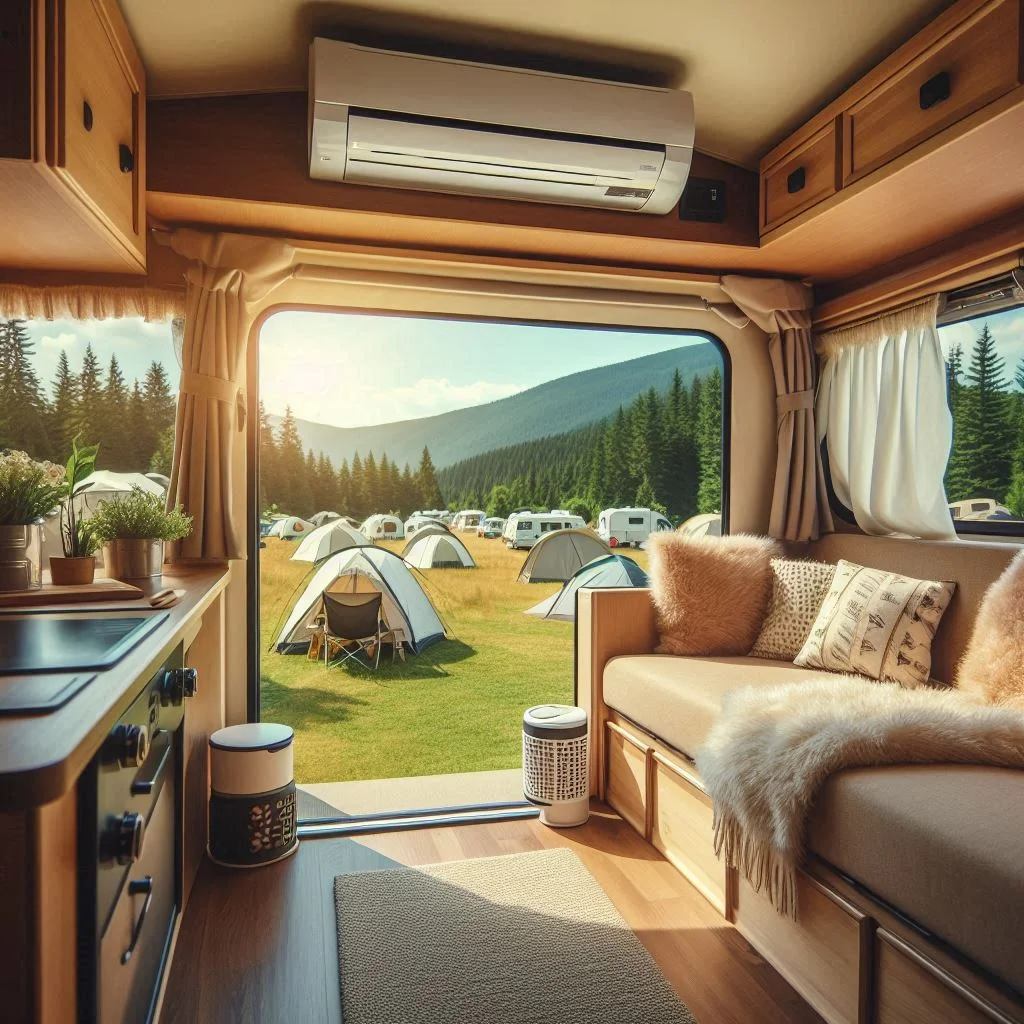
Why Air Conditioning is Essential for Pop Up Campers
Camping during the warmer months can be a delightful experience, but excessive heat can quickly turn it into an uncomfortable ordeal. Air conditioning plays a crucial role in maintaining a pleasant indoor temperature, which is vital for several reasons:
-
Comfort: Prolonged exposure to high temperatures can lead to heat exhaustion or heat stroke, especially for children and the elderly. A well-functioning air conditioner provides relief from the heat, allowing you to enjoy your camping trip fully.
-
Improved Sleep Quality: Hot, stuffy nights can disrupt your sleep. An air-conditioned camper ensures a cool and comfortable environment, promoting better rest and rejuvenation after a day of outdoor activities.
-
Humidity Control: High humidity levels can make the air feel warmer and uncomfortable. Air conditioning helps regulate humidity, making the air more breathable and reducing the risk of mold and mildew.
-
Enhanced Air Quality: Many air conditioning units come with filters that can remove dust, pollen, and other allergens from the air, providing a healthier indoor environment.
-
Increased Enjoyment of Indoor Activities: Air conditioning allows you to enjoy indoor games, cooking, or relaxation without being hindered by outdoor heat.
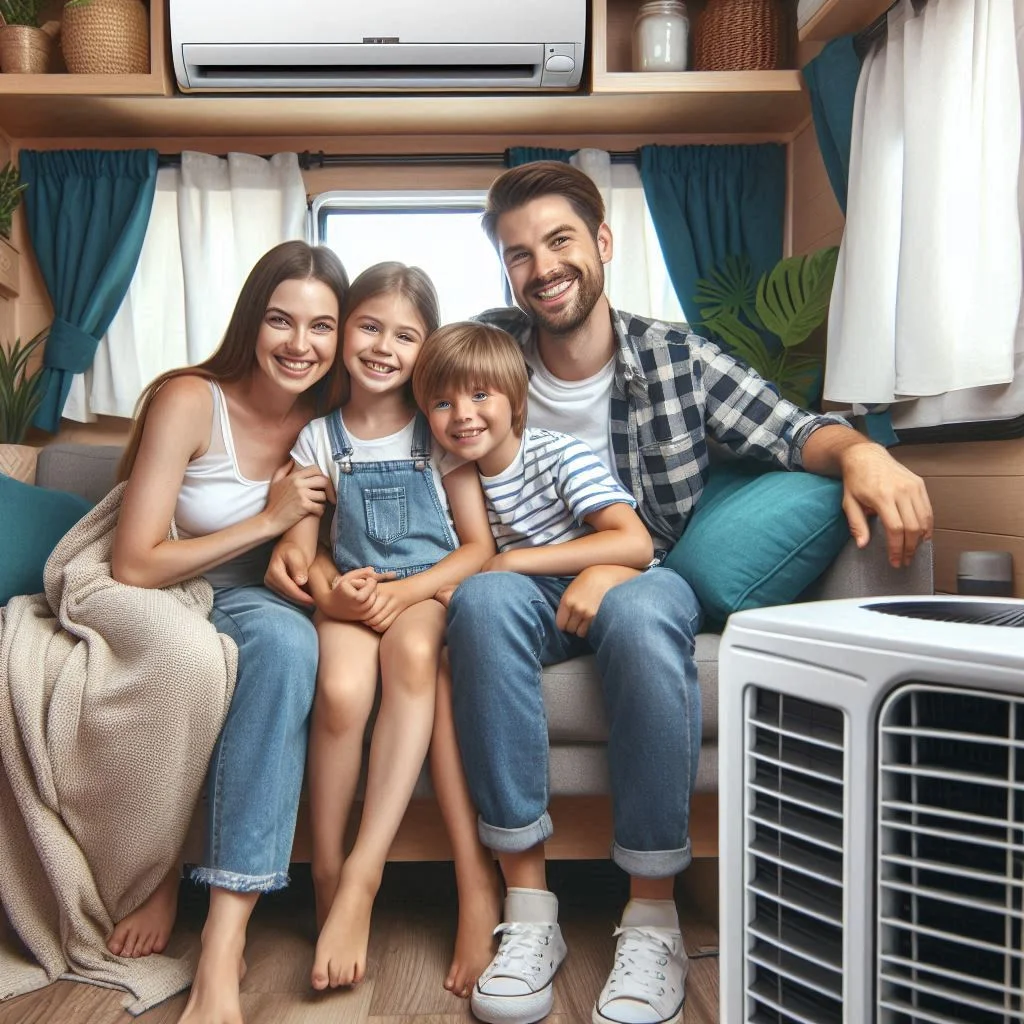
Overview of Air Conditioning Options for Pop Up Campers
When it comes to choosing the right air conditioning system for your pop-up camper, several options are available, each with its unique advantages and drawbacks. Here’s an overview of the most common air conditioning options for pop-up campers:
-
Rooftop Air Conditioners:
- These units are mounted on the roof of the camper and are often the most powerful option. They require proper installation and a sturdy roof frame to support their weight. Rooftop units are known for their efficient cooling capabilities, making them ideal for hot climates.
-
Portable Air Conditioners:
- These are versatile units that can be moved around as needed. Portable air conditioners are generally easier to install and do not require permanent modifications to the camper. However, they may not be as powerful as rooftop units and often need venting out a window or opening.
-
Window Air Conditioners:
- If your pop-up camper has a window frame that can accommodate a window unit, this can be a cost-effective solution. These units are straightforward to install but may require you to leave a window open, which could affect security and insulation.
-
Ductless Mini-Split Systems:
- For a more permanent solution, ductless mini-split systems can provide efficient cooling without the need for ductwork. These systems consist of an outdoor compressor and an indoor air-handling unit. They can be more expensive but offer superior efficiency and comfort.
-
Evaporative Coolers:
- Also known as swamp coolers, these are a more eco-friendly option. They work best in dry climates and can significantly reduce the temperature by evaporating water. However, their effectiveness decreases in humid conditions.
Different Types of Air Conditioners for Pop Up Campers
Choosing the right air conditioning system for your pop-up camper is essential for achieving optimal comfort during your travels. With various options available, it’s crucial to understand the advantages and disadvantages of each type. Below, we’ll explore three popular air conditioning solutions: rooftop air conditioners, portable air conditioners, and window air conditioners.

Rooftop Air Conditioners
Rooftop air conditioners are a popular choice among pop-up camper owners due to their efficiency and ability to cool larger spaces. These units are designed to be mounted on the roof of the camper, providing a streamlined appearance and freeing up interior space. Here are the key features and benefits:
-
Powerful Cooling Capacity: Rooftop units are equipped with robust compressors that can quickly cool down the interior of the camper, making them ideal for hot summer days.
-
Space-Saving Design: By installing the unit on the roof, you maintain valuable floor and living space inside the camper. This is particularly beneficial for smaller pop-up models.
-
Durability: Built to withstand outdoor conditions, rooftop air conditioners are often more robust than other types. They can handle wind, rain, and sun exposure, ensuring long-lasting performance.
-
Energy Efficiency: Many modern rooftop units are designed with energy-saving features, such as variable-speed fans and programmable thermostats, helping you reduce power consumption during your trips.
-
Installation Considerations: While rooftop air conditioners offer numerous advantages, they do require proper installation. Ensure that your camper’s roof can support the weight and consider professional installation if you’re not comfortable with the process.
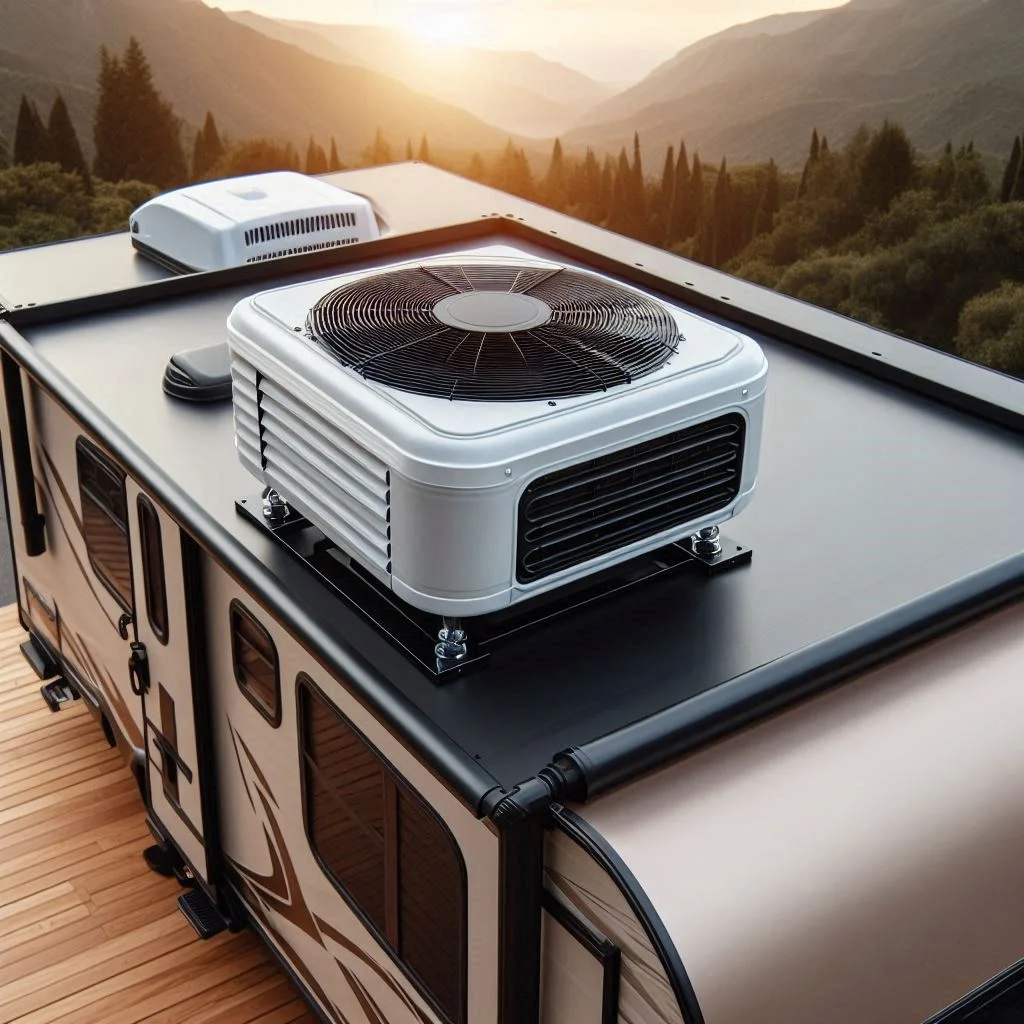
Portable Air Conditioners
Portable air conditioners are an excellent alternative for pop-up campers, especially for those who prefer flexibility and easy setup. These units can be moved around the camper as needed, offering versatility in cooling. Here are some essential aspects of portable air conditioners:
-
Mobility and Flexibility: Portable units can be easily relocated, allowing you to direct cool air where it’s needed most. This is particularly useful for larger campers with multiple areas to cool.
-
Ease of Installation: Most portable air conditioners come with straightforward installation requirements. Many units simply need to be plugged in and require minimal setup, making them user-friendly for all campers.
-
No Permanent Modifications: Since portable air conditioners do not require installation on the camper’s roof or windows, they won’t affect the camper’s structural integrity. This is an advantage for those who prefer not to make permanent changes.
-
Variety of Sizes: Portable air conditioners come in various sizes and cooling capacities, making it easier to choose one that fits your camper’s needs. Be sure to select a unit with an appropriate BTU rating based on your camper’s dimensions.
-
Ventilation Requirements: While portable air conditioners are convenient, they do require proper ventilation. Most units include an exhaust hose that needs to be directed outside, typically through a window or vent.
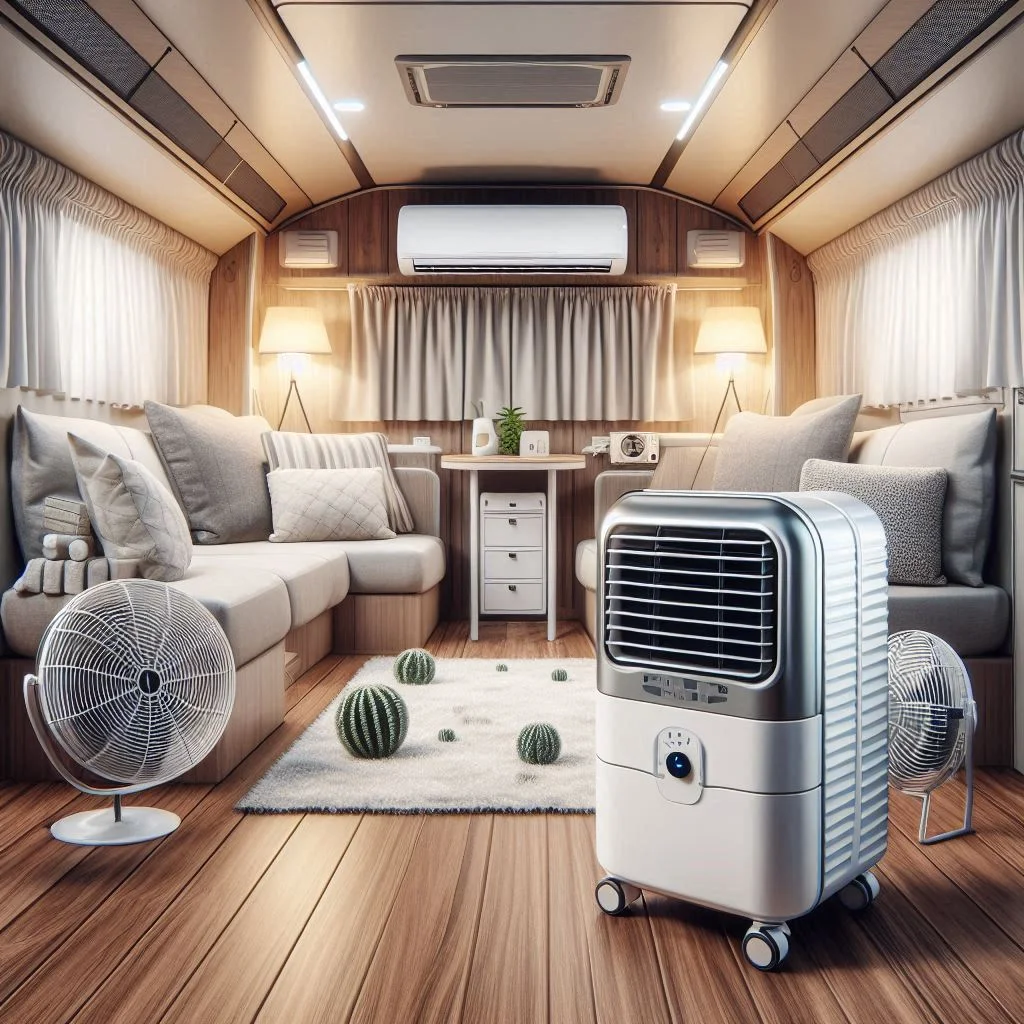
Window Air Conditioners
Window air conditioners can be an affordable and effective option for cooling pop-up campers, especially if they are designed with compatible window frames. Here’s what you need to know about this type of air conditioning:
-
Cost-Effective Solution: Window air conditioners are generally less expensive than other types, making them an attractive choice for budget-conscious campers. They often provide excellent cooling performance for the price.
-
Easy Installation: Installing a window air conditioner is typically straightforward and can often be done without professional help. Most units come with installation kits and detailed instructions.
-
Good Cooling Capacity: Many window units offer powerful cooling capabilities, suitable for smaller spaces. Choose a unit with the appropriate BTU rating to ensure effective cooling for your pop-up camper.
-
Reduced Indoor Space Usage: Like rooftop units, window air conditioners do not take up valuable floor space inside the camper. However, they require a window frame for installation, which may limit placement options.
-
Security and Insulation Considerations: While window units can provide effective cooling, leaving a window partially open for ventilation can pose security risks and may reduce insulation efficiency. Ensure that your camper’s window is secure after installation.
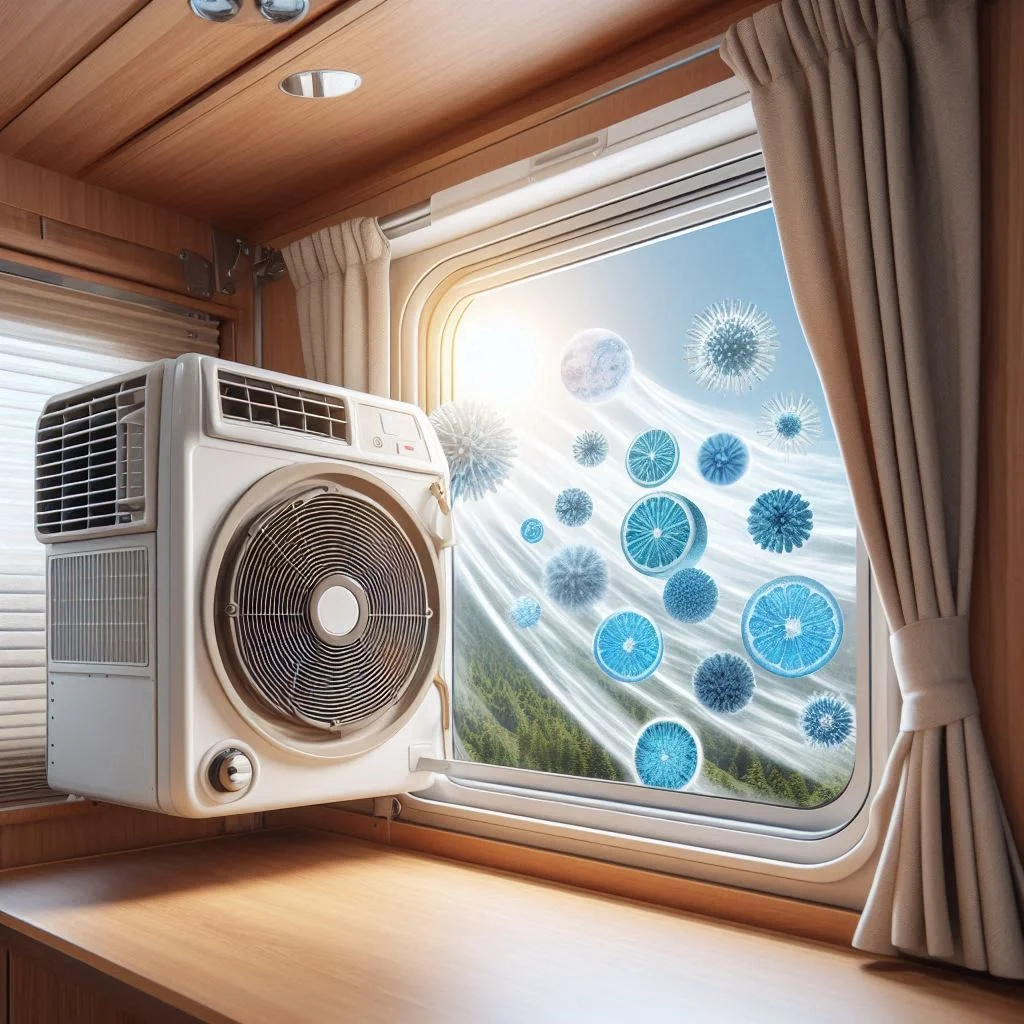
Installation Tips for Air Conditioners in Pop Up Campers
Installing an air conditioner in your pop-up camper can significantly improve your camping experience by ensuring a comfortable indoor environment. Proper installation is crucial for optimal performance and longevity of the unit. Below, we will explore essential steps for preparing your camper for installation, a step-by-step installation guide, and important safety precautions.
Preparing Your Camper for Installation
Before installing an air conditioner, it’s essential to prepare your pop-up camper to ensure a smooth process and optimal performance. Here are the key steps to follow:
-
Choose the Right Location: Determine where you want to install the air conditioner. For rooftop units, ensure the roof is structurally sound and free of obstructions. For window or portable units, consider placement for optimal airflow and ventilation.
-
Measure Dimensions: Measure the area where the air conditioner will be installed. Check the dimensions of the air conditioner to ensure it will fit properly. For window units, make sure the window frame can accommodate the unit’s size.
-
Gather Necessary Tools and Materials: Collect all tools and materials needed for installation, including screws, brackets, sealant, and any required mounting hardware. Having everything on hand will streamline the process.
-
Inspect the Camper’s Electrical System: Ensure that your camper’s electrical system can support the air conditioner. Check for available power outlets and confirm that the electrical system can handle the unit’s wattage.
-
Clean the Installation Area: Clear the area around the installation site of any debris or obstructions. This will facilitate a safe and efficient installation process.
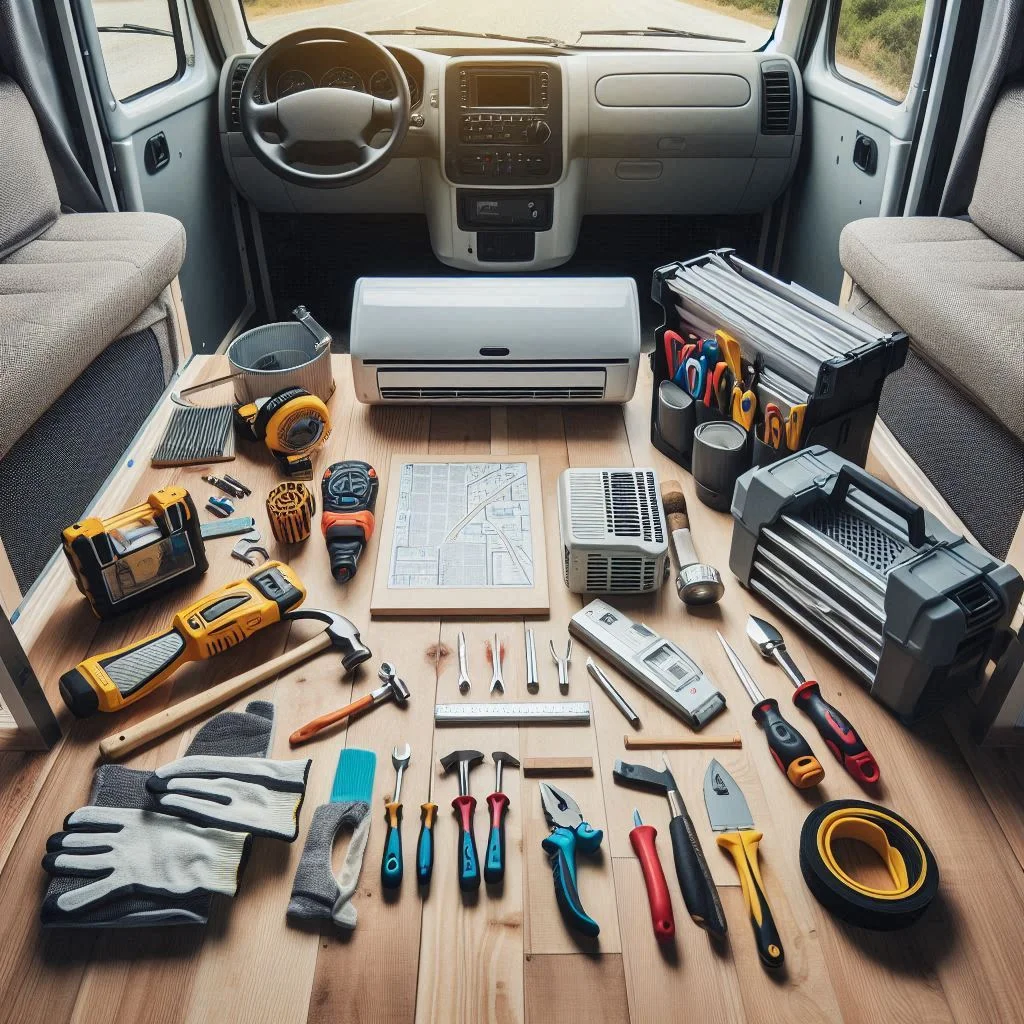
Step-by-Step Installation Guide
Once your camper is prepared, you can proceed with the installation of the air conditioner. Here’s a detailed step-by-step guide:
-
Read the Manufacturer’s Instructions: Begin by thoroughly reading the installation manual provided by the manufacturer. Different units may have specific requirements and guidelines.
-
Install the Mounting Brackets: For rooftop units, use screws and brackets to secure the air conditioner to the camper’s roof. Follow the manufacturer’s recommendations for bracket placement and spacing.
-
Seal the Installation Area: Apply weatherproof sealant around the edges of the air conditioner to prevent leaks and moisture intrusion. This step is crucial for maintaining the integrity of your camper.
-
Connect the Power Supply: If you are installing a rooftop or window unit, connect the air conditioner to the camper’s electrical system. For portable units, ensure that they are plugged into a compatible power outlet.
-
Test the Unit: After installation, turn on the air conditioner to test its functionality. Check for proper airflow, cooling efficiency, and any unusual noises. Ensure that the unit operates smoothly.
-
Finalize Any Adjustments: Make any necessary adjustments to the installation, such as repositioning for optimal airflow or tightening loose screws.
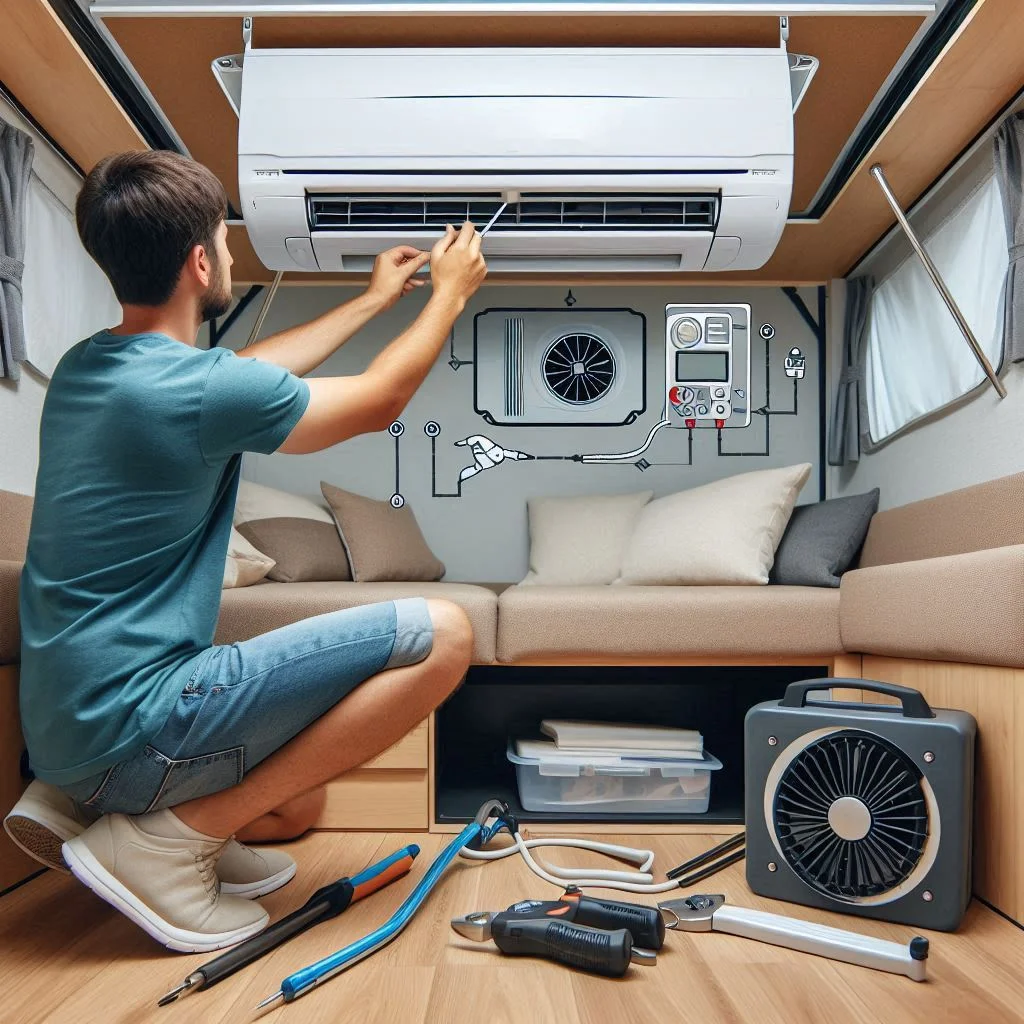
Safety Precautions During Installation
Safety should always be a top priority when installing an air conditioner in your pop-up camper. Here are important safety precautions to consider:
-
Wear Protective Gear: Use safety goggles, gloves, and a dust mask during installation to protect yourself from debris and potential injuries.
-
Ensure Stability: When working on the roof or elevated areas, ensure you have a stable ladder and consider having a second person assist you. Avoid leaning too far or overreaching, which could lead to accidents.
-
Check Electrical Connections: Always disconnect the power supply before starting the installation. Ensure that all electrical connections are secure and comply with local electrical codes to prevent hazards.
-
Secure the Air Conditioner Properly: Make sure the air conditioner is securely mounted to avoid any risk of it falling or shifting while in use.
-
Test for Leaks After Installation: After sealing the installation area, check for any signs of leaks around the air conditioner. Address any issues immediately to prevent water damage to your camper.
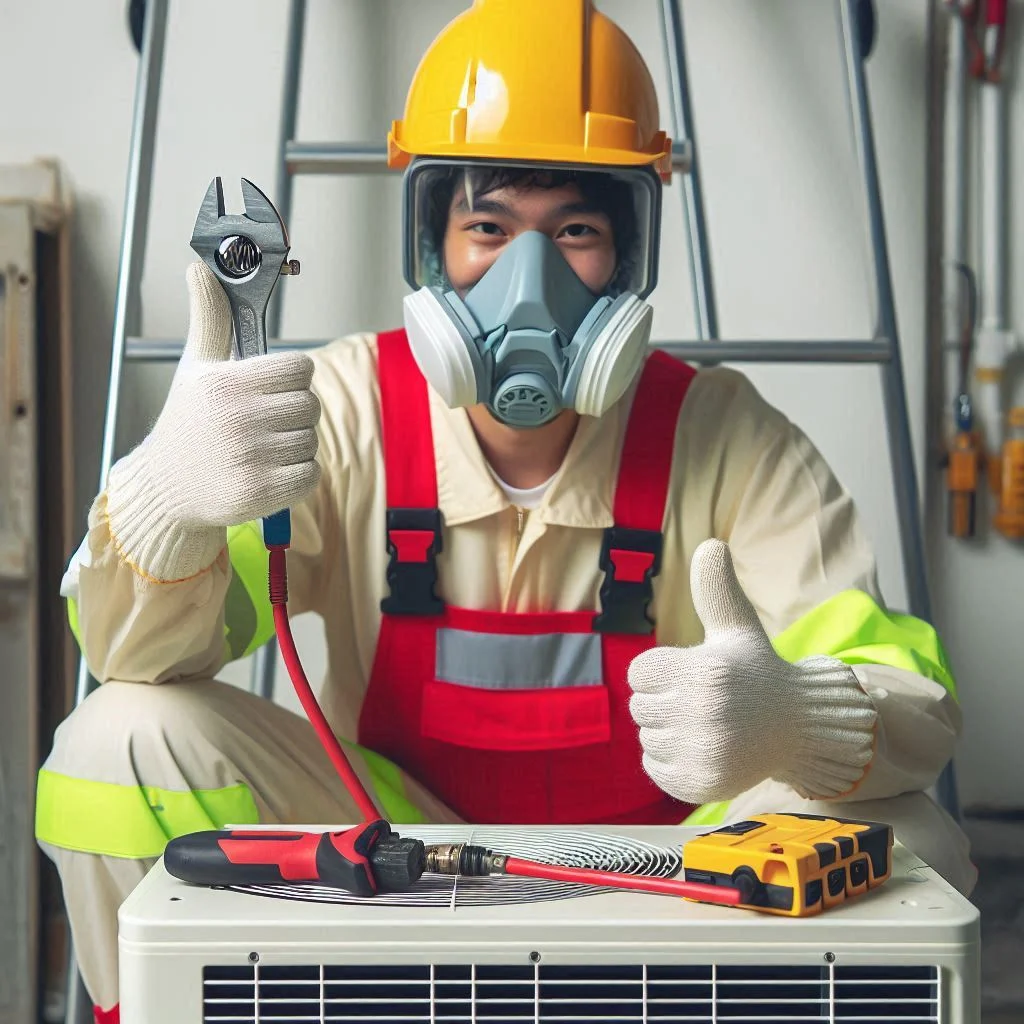
Energy Efficiency and Maintenance for Camper Air Conditioners
To ensure your camper air conditioner operates effectively and lasts for many seasons, focusing on energy efficiency and regular maintenance is essential. Not only does this help reduce your energy costs, but it also prolongs the life of your unit. This section covers tips for maximizing energy efficiency, regular maintenance practices, and troubleshooting common issues.
Tips for Maximizing Energy Efficiency
Maximizing the energy efficiency of your camper air conditioner not only helps you save money but also reduces your carbon footprint. Here are practical tips to enhance energy efficiency:
-
Choose the Right Size Unit: Selecting an air conditioner with the appropriate BTU rating for your camper’s size is crucial. An oversized unit will cycle on and off frequently, wasting energy, while an undersized unit will struggle to cool effectively.
-
Use Energy-Efficient Models: When purchasing an air conditioner, look for Energy Star-rated units that are designed for energy efficiency. These models typically consume less electricity and have advanced features to help save energy.
-
Maintain Proper Insulation: Ensure that your camper is well-insulated to minimize heat gain. Check for gaps in doors and windows, and use weather stripping to seal any leaks. This prevents cool air from escaping and reduces the workload on your air conditioner.
-
Utilize Shade and Ventilation: Whenever possible, park your camper in shaded areas to reduce the heat that enters the camper. Use awnings or reflective window covers to block direct sunlight. Additionally, open windows and use ventilation fans to promote airflow during cooler times.
-
Set a Moderate Temperature: Avoid setting your air conditioner to extremely low temperatures. Setting it to a moderate level (around 75°F) can provide comfort while reducing energy consumption.
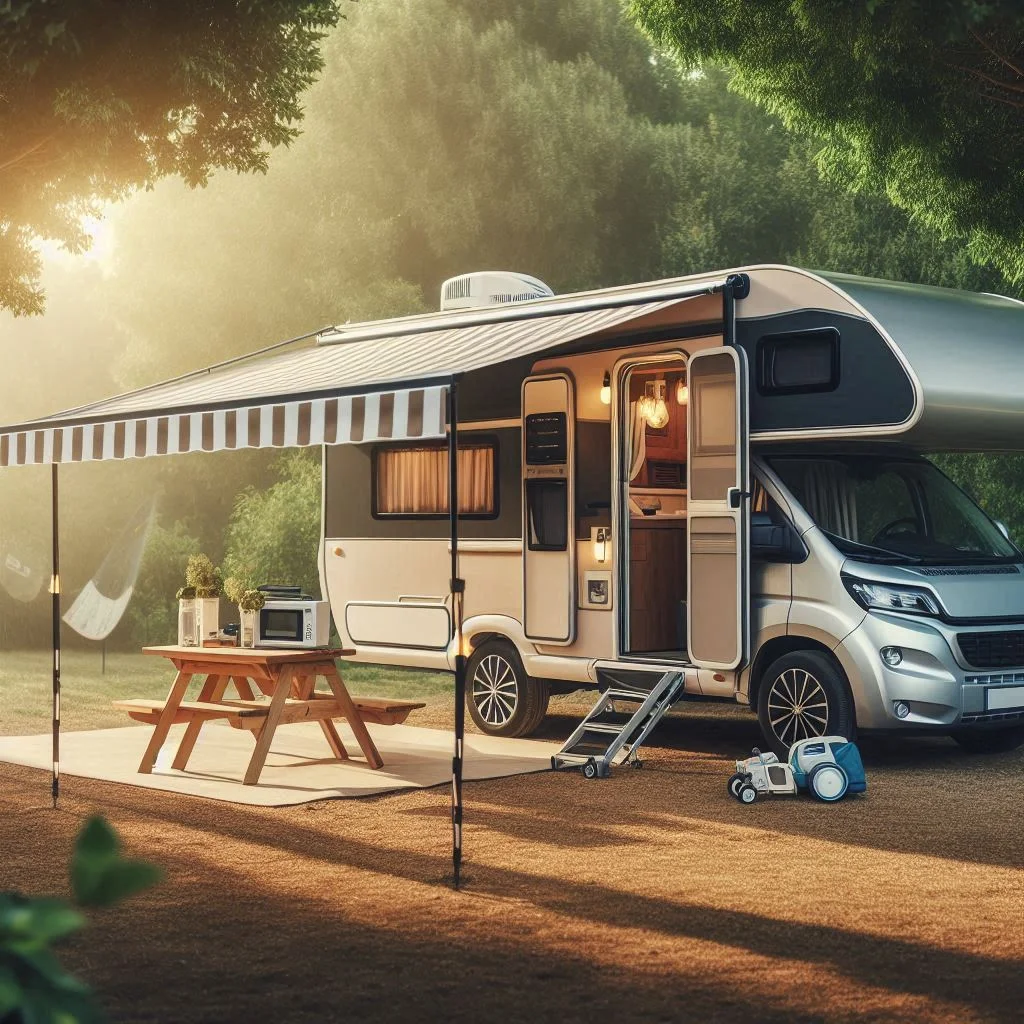
Regular Maintenance Practices
Regular maintenance is key to ensuring your camper air conditioner operates efficiently and reliably. Follow these maintenance practices to keep your unit in top condition:
-
Clean or Replace Filters: Clogged filters can restrict airflow and reduce efficiency. Check and clean or replace the air filters regularly, ideally every month, especially during heavy use.
-
Inspect and Clean Coils: Dust and debris can accumulate on the evaporator and condenser coils, hindering performance. Periodically inspect the coils and clean them with a soft brush or cloth to maintain optimal airflow.
-
Check Drainage: Ensure that the condensation drain is clear and functioning properly. Blocked drainage can lead to water buildup and damage your air conditioner or camper. Clean the drain pan and tubes regularly.
-
Examine Electrical Connections: Regularly check electrical connections for any signs of wear or corrosion. Tighten loose connections and replace damaged wires to prevent electrical issues.
-
Schedule Professional Inspections: Consider having a professional technician inspect your air conditioner annually. They can identify potential issues and perform maintenance tasks that may require specialized tools.
Troubleshooting Common Issues
Despite regular maintenance, air conditioners can encounter issues that may require troubleshooting. Here are some common problems and solutions:
-
Unit Not Cooling Properly: If the air conditioner is running but not cooling effectively, check the filters for clogs, and ensure that the thermostat is set to the desired temperature. Inspect the coils for dirt buildup, which can impede performance.
-
Unusual Noises: Strange sounds coming from the air conditioner can indicate loose parts or debris in the unit. Check for loose screws, and inspect the fan blades for obstructions. If the issue persists, consult a professional.
-
Water Leaks: Water pooling around the air conditioner may signal a clogged drainage line or an issue with the drain pan. Clear any obstructions and ensure the drain pan is positioned correctly.
-
Power Issues: If the air conditioner won’t turn on, check the power supply, including fuses and circuit breakers. Ensure the unit is plugged in and that the outlet is functioning properly.
-
Foul Odors: Unpleasant smells may indicate mold or mildew buildup within the unit. Clean or replace the filters and coils, and run the unit on a dry mode to eliminate excess moisture.

Creative Ideas to Enhance Your Camper’s Cooling System
Enhancing your camper’s cooling system is essential for maintaining a comfortable environment during hot summer trips. By incorporating creative solutions, you can significantly improve airflow, reduce heat, and make your camping experience more enjoyable. This section explores using reflective materials, creating ventilation for optimal airflow, and incorporating shade solutions.
Using Reflective Materials to Reduce Heat
Reflective materials can be highly effective in reducing heat gain inside your camper. Here are some ways to utilize them:
-
Install Reflective Window Film: Applying reflective film to your camper windows can block a significant amount of solar heat while allowing natural light in. This solution not only helps maintain cooler temperatures inside but also protects your furniture and upholstery from fading.
-
Use Reflective Roof Coatings: Consider applying a reflective coating to your camper’s roof. This will help reflect sunlight away, reducing heat absorption and keeping the interior cooler. Many products are available that are specifically designed for RVs and campers.
-
Employ Insulating Reflective Curtains: Hanging insulating curtains made with reflective material can provide an additional layer of protection against heat. These curtains can be closed during the hottest parts of the day, preventing heat from penetrating the camper.
-
Install Reflective Shields: If your camper has external awnings, consider attaching reflective shields. These shields can be adjusted to block direct sunlight, further reducing heat absorption.

Creating Ventilation for Optimal Airflow
Proper ventilation is key to maintaining a cool and comfortable camper environment. Here are effective strategies to enhance airflow:
-
Install Roof Vents: Adding roof vents can facilitate hot air escape while allowing cooler air to flow in. Look for adjustable vents that can be opened or closed depending on weather conditions.
-
Use Portable Fans: Incorporate portable fans strategically throughout your camper to improve airflow. Position fans near windows to draw in cooler outside air or to circulate air effectively within the space.
-
Create Cross-Ventilation: To maximize airflow, open windows on opposite sides of your camper to create cross-ventilation. This natural airflow can significantly cool the interior without relying solely on the air conditioning unit.
-
Utilize Exhaust Fans: If your camper has a kitchen or bathroom area, installing exhaust fans can help remove hot, humid air, especially after cooking or showering. This helps maintain a cooler overall environment.
Incorporating Shade Solutions
Creating shaded areas around your camper is an effective way to enhance cooling. Here are some shade solutions to consider:
-
Set Up Awnings: Installing awnings on your camper provides immediate shade, keeping the area cooler. Retractable awnings are a great option, allowing you to extend them as needed.
-
Use Shade Sails: Consider adding shade sails around your campsite. These fabric structures can provide additional shade for your camper and outdoor living space, reducing direct sunlight exposure.
-
Plant Trees or Use Portable Shade Structures: If you’re staying in one location for an extended period, consider planting trees or using portable shade structures like pop-up tents or gazebos to create shaded areas.
-
Position Your Camper Wisely: When setting up your campsite, choose a location with natural shade from trees or other structures. This simple tactic can help significantly lower the temperature inside your camper.
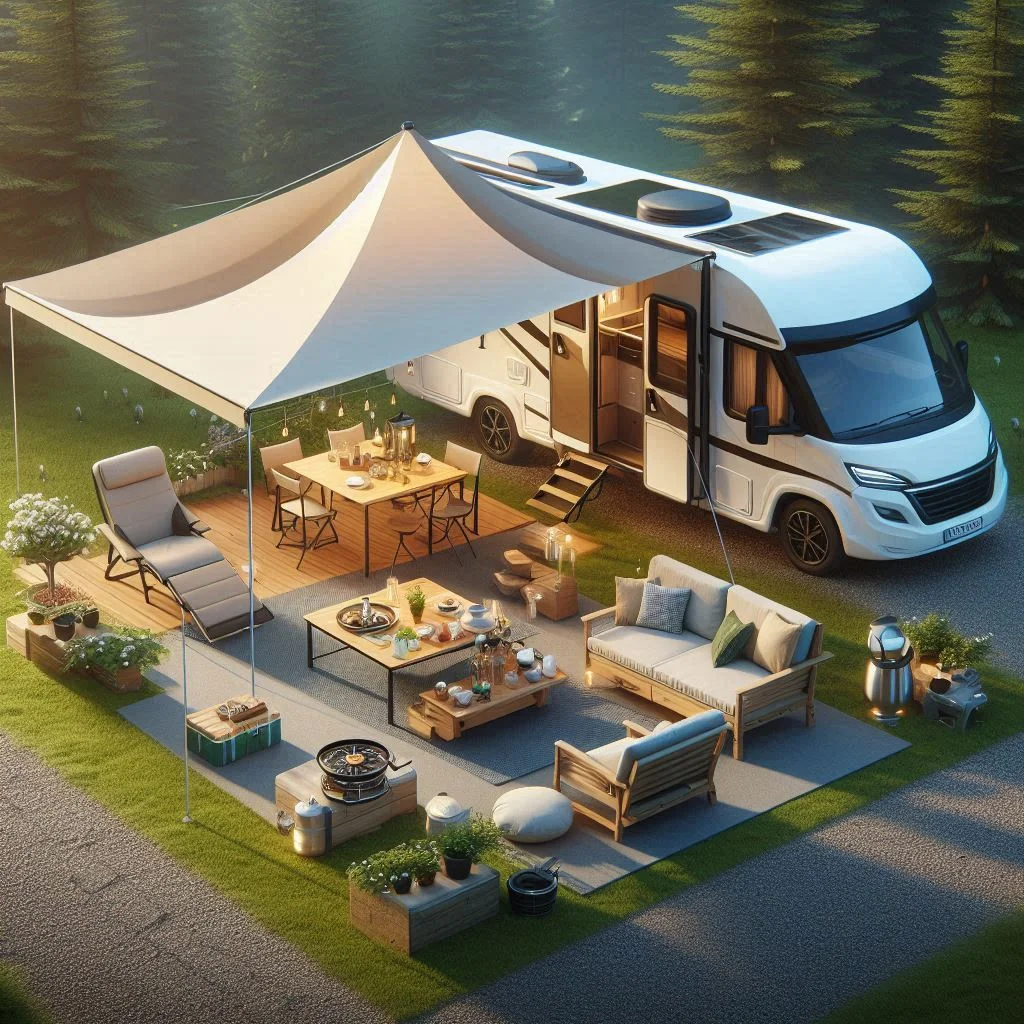
FAQs About Pop Up Camper Air Conditioner Ideas
As pop-up campers become increasingly popular for outdoor adventures, many owners have questions about air conditioning options and maintenance. This FAQ section addresses common inquiries to help you make informed decisions and optimize your camper’s cooling system.
What size air conditioner do I need for my pop up camper?
Choosing the right size air conditioner for your pop-up camper is crucial for optimal cooling and energy efficiency. The size of an air conditioner is measured in BTUs (British Thermal Units), which indicates its cooling capacity. Here’s how to determine the appropriate size:
-
Calculate the Camper’s Square Footage: Measure the length and width of your camper’s living space to calculate the total square footage.
-
General BTU Guidelines: As a rule of thumb, most pop-up campers require about 20 BTUs per square foot of living space. For example, if your camper is 100 square feet, you would need a unit with approximately 2,000 BTUs.
-
Consider Additional Factors: Take into account factors such as the number of windows, insulation quality, and the camper’s location (sunny vs. shaded). If your camper has poor insulation or many windows, you may want to choose a slightly larger unit.
-
Consult Manufacturer Recommendations: Always refer to the manufacturer’s specifications and recommendations for your specific camper model to ensure you choose an appropriately sized air conditioner.
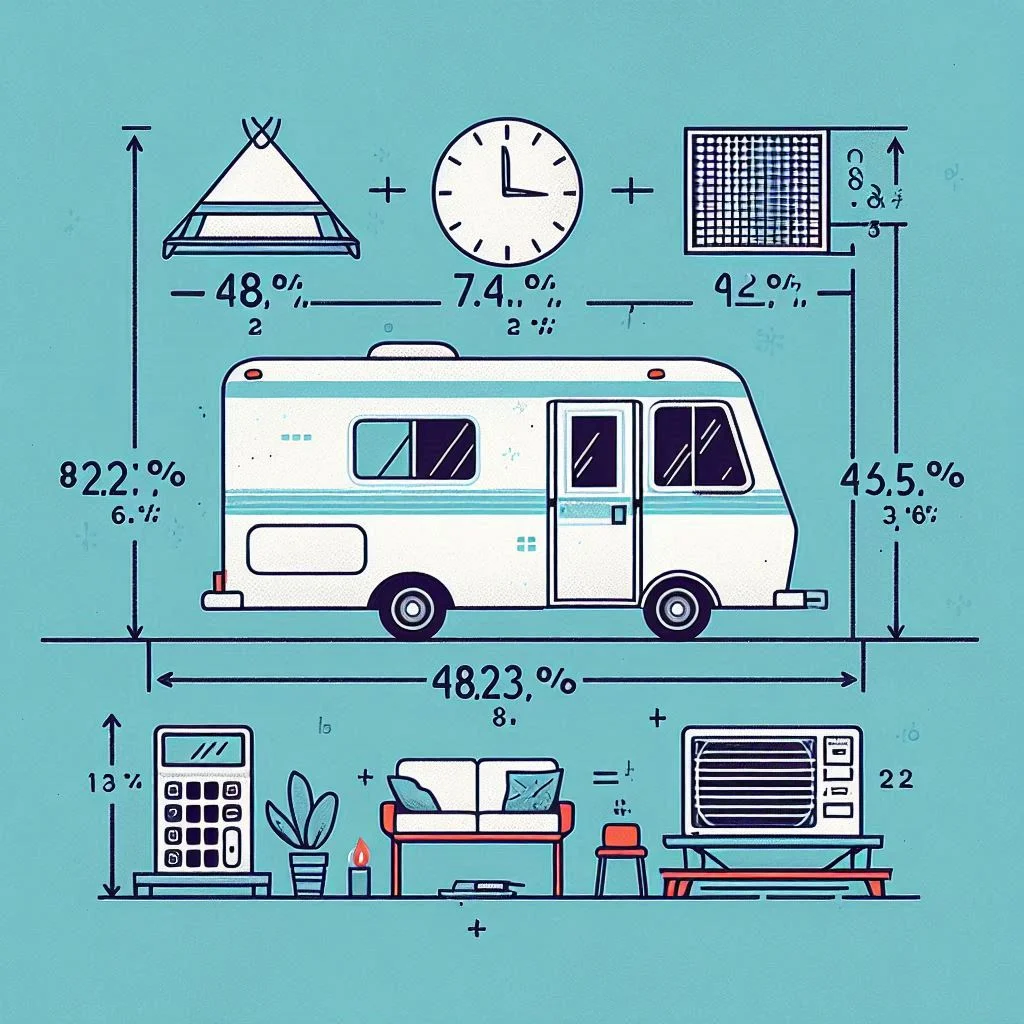
How do I ensure my air conditioner runs efficiently?
To keep your pop-up camper’s air conditioner running efficiently, follow these essential tips:
-
Regular Maintenance: Conduct routine maintenance, including cleaning or replacing filters, checking for dirt on coils, and ensuring drainage systems are clear. Regular upkeep helps prevent efficiency loss and extends the lifespan of your unit.
-
Use Reflective Materials: Employ reflective window films or shades to minimize heat absorption, allowing your air conditioner to work less to maintain a comfortable temperature.
-
Optimize Ventilation: Enhance airflow by opening windows opposite your air conditioner to create cross-ventilation. This practice can help cool the camper without relying solely on the air conditioner.
-
Set a Moderate Temperature: Avoid setting your air conditioner to extremely low temperatures. A moderate setting (around 75°F) can provide comfort while reducing energy consumption.
-
Check for Leaks: Regularly inspect your camper for air leaks around windows and doors, and seal any gaps. Reducing hot air infiltration keeps the interior cooler and helps your air conditioner run efficiently.

Can I use a generator to power my camper’s air conditioner?
Yes, you can use a generator to power your pop-up camper’s air conditioner, but there are several important considerations:
-
Power Requirements: Before purchasing a generator, check the wattage requirements of your air conditioner. Most air conditioners require between 1,200 and 2,500 starting watts and 600 to 1,500 running watts. Choose a generator that can accommodate these requirements.
-
Inverter Generators: For quieter operation and stable power output, consider using an inverter generator. These generators produce clean energy that’s safe for sensitive electronics and appliances, making them ideal for campers.
-
Fuel Type: Determine the fuel type that works best for your needs, whether it’s gasoline, propane, or dual-fuel. Each type has its pros and cons, so select one that fits your camping style and preferences.
-
Runtime and Maintenance: Ensure that your generator has sufficient runtime to power your air conditioner during peak usage times. Regular maintenance is also essential to ensure reliable performance.
-
Safety Precautions: Always follow safety guidelines when operating a generator, including keeping it at a safe distance from your camper and ensuring proper ventilation to prevent carbon monoxide buildup.
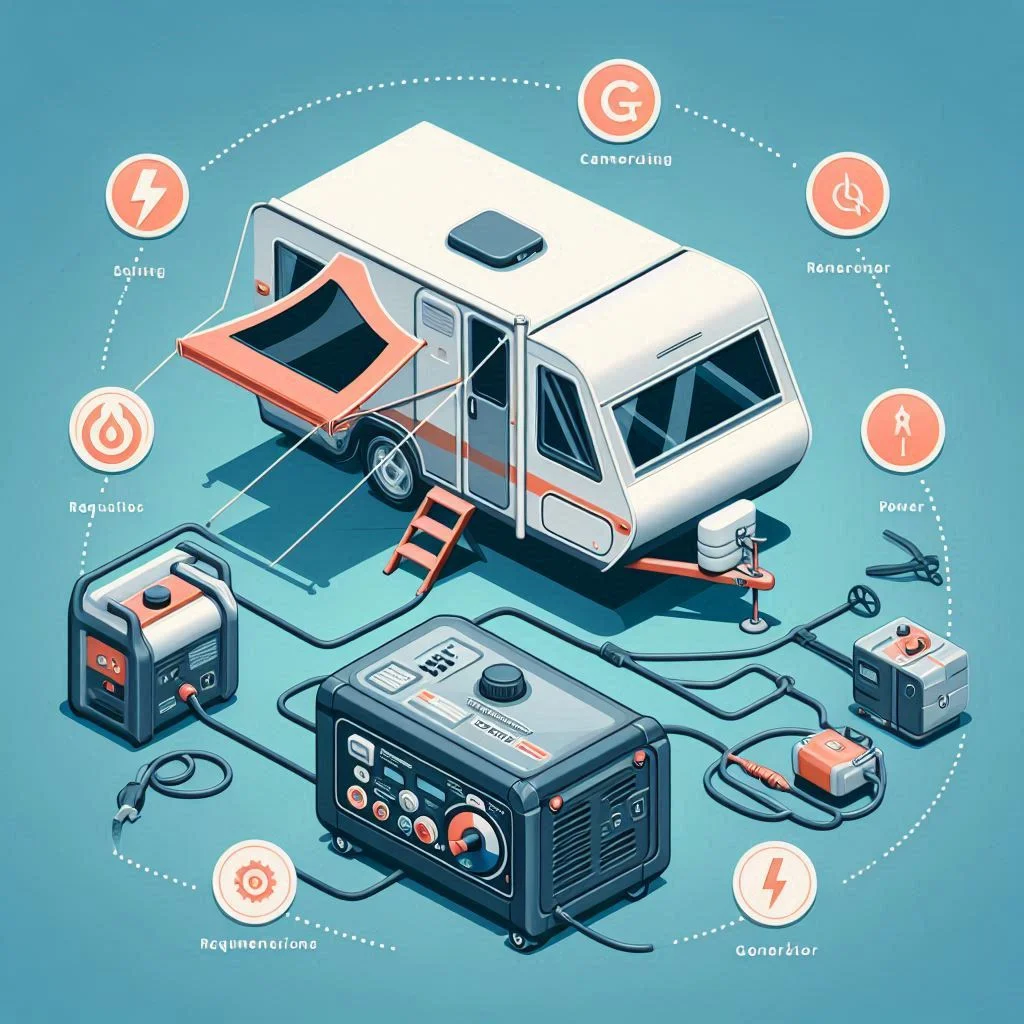
What are the best tips for maintaining my camper’s air conditioner?
Proper maintenance of your pop-up camper’s air conditioner is essential for optimal performance and longevity. Here are the best tips for keeping your unit in top shape:
-
Clean or Replace Air Filters Regularly: Dirty filters can restrict airflow, leading to inefficiency. Clean or replace the air filters every month, especially during heavy use.
-
Inspect Coils and Fins: Regularly check the evaporator and condenser coils for dirt and debris. Clean them gently to maintain airflow and efficiency.
-
Clear Drainage Systems: Ensure that the condensate drain is clear to prevent water buildup, which can lead to mold and damage. Regularly inspect and clean the drain pan and tubing.
-
Check Seals and Insulation: Inspect the seals around doors and windows for wear and tear. Replace any damaged seals and ensure your camper is well-insulated to minimize heat gain.
-
Schedule Professional Servicing: Consider scheduling a professional inspection annually. A qualified technician can perform comprehensive maintenance, identify potential issues, and ensure your air conditioner is in optimal condition.
Conclusion
In conclusion, enhancing the air conditioning system in your pop-up camper is essential for a comfortable and enjoyable camping experience. By understanding the different types of air conditioners available, implementing creative cooling strategies, and maintaining your unit effectively, you can ensure optimal performance and energy efficiency. Whether you opt for reflective materials, improve ventilation, or utilize shade solutions, these ideas will significantly contribute to a cooler interior during hot summer days. Additionally, addressing common questions about sizing, power requirements, and maintenance will empower you to make informed decisions about your camper’s air conditioning. With these insights and tips, you can confidently embark on your next adventure, knowing that you’ll stay cool and comfortable no matter where the road takes you.

